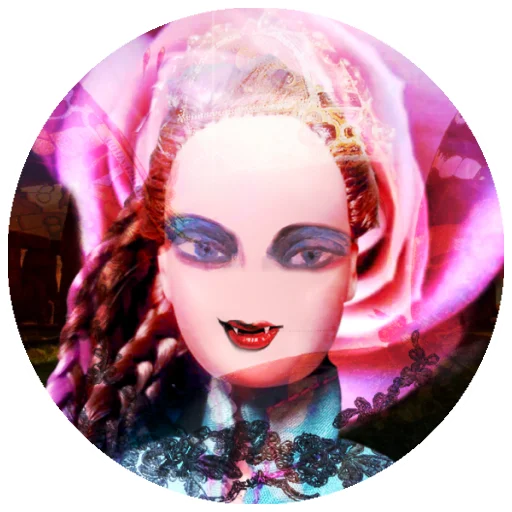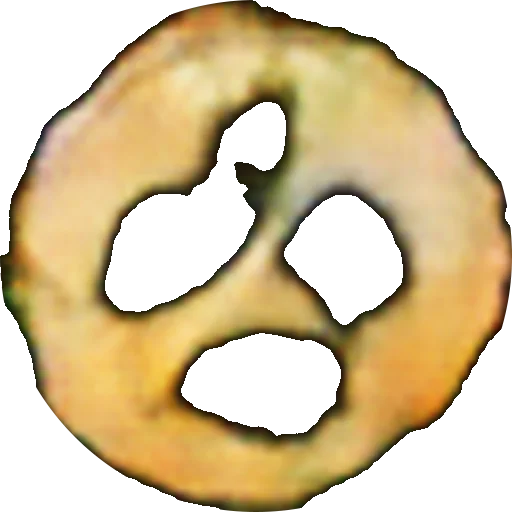
Set: Generation of Princesses
As an starting point we choosed to port our older (2011) work [Generation of Princesses](https://generaceprincezen.cz) to inline bot for generating a specific sticker set (https://t.me/addstickers/GPv1_by_mtzgpbot). During the residency it was possible to all Telegram users to spread this set by using @mtzgpbot. The set reached its end in 120 stickers.
Generation of Princesses grew up from our skepticism of massive image producing on one hand and from the lust of human being to see and emotionally engage the image of face in almost anything which contains three separated spots on the other.
It seems to be the trademark of man throughout his history (totems, masks, portraits, goddess, icons, idols, end emoji), it is a first thing the newborn is going to learn. Almost everything you want to sell to a human being has to have a face, a show on site, a distinguishable expression (car, movie, computer, artist).
We see the Generation of Princesses with its teenage look, pattern-driven logic, self-identification moment, algorithmic encapsulation and ability of producing bunch of outputs actualise itself in an incoming era of AI produced images and as such it make sense for us to introduce it again in the form of Telegram bot.

Set: Generation Bastards
With the typical self-irony, as the second set we have made almost endless line* of hybrids between human faces and emojis and named it as Generation of Bastards. By training the DCGAN (Deep Convolutional Generative Adversarial Network) on extracts from [UTKFace](https://susanqq.github.io/UTKFace/) and [emoji-data](https://github.com/iamcal/emoji-data) we have got the [model](https://metazoa.org/netart-berlin-telegram-residency-2020/generator-of-bastards.hdf5) for another Telegram bot @mtzaibot. This bot will remain active for some time.
In this case we were interested not only to produce, even low-res, AI generated stickers. After all, the core concept remained the same as before, three dots in colored blob as emotionally tinged face. The main direction was to take advantage of the residency to deeply explore pitfalls of training AI in general. To explore its exclusiveness in the sense of knowledge, emic, time and for sure a technical equipment. We would rather be able to bring some new and shocking ideas, but please wait…
* Generation of Bastards sets are automatically versioned until reach the maximum of stickers in set (119)
Set: Please Wait
In puting preloaders in the place of emoticons we try to point up, that the most emotional moments we experience in the front of a computer may be watching the loading bar or the spinning preloader until expected content is prepared.
This forced waiting moments are the very rare moments in the interaction with computer, where we have time to observe our emotions and their origins. And maybe decide to not to load what we thought we would like to load before.
Another topic of this sticker set is the politics of the illusion of the fastest, the immediate, direct, clear and the round-the-clock service we expect from the communication with computer programs as well as from the communication with humans and ourselves.
Artists: &
Barbora Trnková, together with Tomáš Javůrek, forms the Czech artistic duo working under the common pseudonym & on the metazoa.org domain. Together they create web applications, wifi installations, mobile applications as artworks. They explore – with their own sense of ontologically or tautologically based philosophy, intimacy and subtle humor – the possibilities of technologies as an interface om on which inhuman actors meet through human actors.
In 2012, they established and run ScreenSaverGallery, an online exhibition project accessible as a screensaver on a user’s personal computer. At present, both of them work as doctoral Candidates at the Faculty of Fine Arts in Brno University of Technology, which they completed in their previous studies. At the same time, Tomáš Javůrek is an assistant at the Photography Studio at FaVU and also works as an assistant professor at the Department of Intermedia at the Academy of Fine Arts and Design in Bratislava. They recently opened a discussion about big data and art in Czech republic with the ongoing project Datatata (https://datatata.info/).


